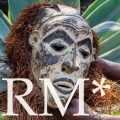For years, scholars and countries that endured colonial violence have called for a reinterpretation of museums that aligns more closely with reality, and in some instances, the restitution of cultural heritage housed in museums—and their storage facilities—in Europe or the United States.
Last year, the Spanish Minister for Culture, Ernest Urtasun, urged for “the review of collections to move beyond the colonial framework”.
In the case of the Canary Islands, this practice presents a series of peculiarities related to their unique historical process.
The decolonisation process also involves contextualising objects, explaining their provenance, their use in their culture of origin, and how they came to be displayed in a museum.
In the Canary Islands, with the withdrawal and claim of the Erques mummy, already housed in the National Archaeological Museum, the debate about restitution and future uses of the remains of the ancient Canarians has intensified.
- Precisely, in one of the galleries under state control, the National Archaeological Museum (MAN), has been exhibiting since 2015 the Guanche mummy from Tenerife, a xaxo – according to studies, the Guanche word – located in the Barranco de Erques and that the Island Council has been claiming since 1976. The request was reiterated in 1990, 2004, 2006, 2012, 2017, and 2021.
- There are documented Guanche mummies exiled in at least ten institutions around the world: University of Havana (Cuba); McGill University in Canada; Cambridge University in England; Göttingen University in Germany; Musée de l’Homme in Paris; and Kunstkámera Museum in St. Petersburg, Russia. “We have been waiting for this for a long time and we do not want to wait any longer. It is the moment and if it is going to be done in other territories, also in ours”.
Simultaneously, museums such as the Museum of Nature and Archaeology in Tenerife (MUNA) hold archaeological materials from Western Sahara, donated by José Héctor Vázquez, the first governor of that territory during Spanish colonisation.


